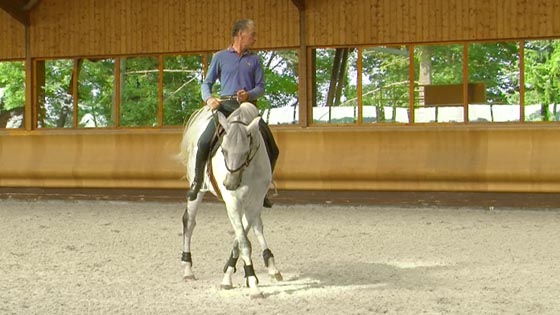How to deal with a horse not responding to the leg aid

Whatever the sensitivity of a horse, his response to the rider’s aids is primarily linked to his training as well as his understanding of the request. Michel gives us a smooth technic to obtain a horse responsive to the leg aid no matter the horse.
Whatever the sensitivity of a horse, his response to the rider’s aids is primarily linked to his training and how well he understands the request. Setting good codes of communication with a horse, requires, first of all that the rider be in a good physical condition to use his body properly. When the rider is able to position himself correctly and is apt for the work demand, then he needs to be tactful enough to act at the correct time and at the correct level of intensity depending on his horse.
Horse’s temperament and rider’s behaviour
It is obvious that some horses are more sensitive and hot than others. However, it should not prevent the rider from making sure that his horse understands the request correctly. Quite often, some riders would say: “My horse is not responsive … He’s sluggish…He’s too cold…”. It is indeed frequent to find some horses who have become completely cold to the leg aid because the request from the rider is not clear enough.
In this type of situation, the riders’ response is always the same. We take a stick, some stronger spurs….According to Michel that escalation will not bring any good if not to have a horse that will give up.
On top of it, if the rider starts influencing his horse in a strong way; the stronger he gets, the worse his position will be. It will disturb his actions with some stiffness and unwanted movements and the horse will be more and more confused in his mind.
A solution the soft way
An easy solution exists. It will palliate quickly to the problem of a horse that does not respond to the leg aid. Michel’s training method is based on the correct physical and mental influence from the rider, the correct level of influence and the good understanding of the horse. This video gives you the perfect insight into it. Lucile and Baladine demonstrate the exercise. To start with, the mare is cold to the leg and the rider tries to carry her mare all the time hoping to reach and stay at the correct speed.
At the end of the lesson, Lucile is impressed by the responsiveness of her mare.
This session is linked to the sheet A2 of the Training program 1








